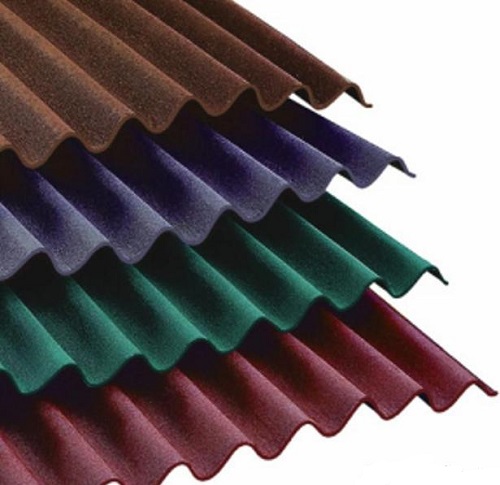
Bitumen slate – these are flexible sheets of cellulose fibers impregnated with distilled bitumen and specially treated with mineral additives with pigments and thermosetting resins. Cellulose is processed at high temperature and under high pressure, which gives the material moisture resistance and strength. Such a roofing is also called flexible slate. Such sheets are used to cover roofs with a slope of at least 5 ° C. On average, the size of the sheets is 1x2 meters. For such a roof, a subbase is necessary, which can be a waterproofing roll material.
Due to the lightness of the material, it is quite convenient for them to overlap even old roofs on top of metal and slate. Bituminous slate is used to cover residential buildings, schools, clinics, production workshops. Sheets of this material are used not only for roofing, and sometimes as a lining of vertical surfaces. In Europe, bitumen slate is used as a temporary roof. Such roofing material is made without asbestos, which makes it environmentally friendly. Depending on the manufacturer, the size of the bitumen sheet varies. For him, the underlay carpet is a waterproofing material. Bituminous sheets overlap and easily bend by hands.

The gaps formed at the junction of the sheets should be sealed with foam or a sealed mass.
Bituminous slate has its advantages:
- relative ease in comparison with classical slate and metal tile;
- variety of colors;
- convenience in work;
- low water absorption;
- biological stability;
- good weather resistance;
- chemical resistance to alkalis and acids;
- resistance to diesel fuel and gasoline;
- convenience in work.

Bituminous roofing sheets can be mounted on a regular wooden crate, for this you only need a hammer and nails.
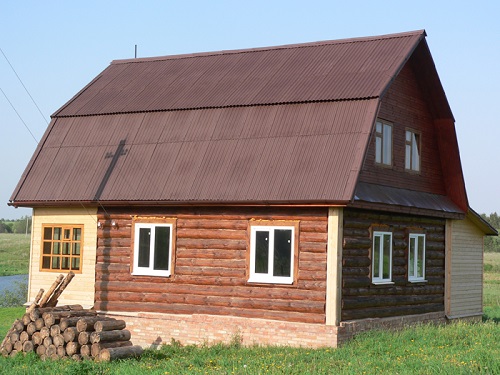
The maximum load capacity exceeds the parameters set by the standards. Bituminous slate has proven its durability in various climatic conditions. Due to the bitumen slate, the most optimal fit is possible even on uneven sub-structures. Such sheets are suitable for collecting rain and melt water. They can be freely laid on bulges with a radius of more than 8 meters. On average, the weight of one sheet of bitumen slate is 4.5 kg. It is very important that during heavy rainfall the bitumen slate is completely silent. Bitumen sheets can have a glossy and matte finish. Matte sheets are rough to the touch and have an acrylic color. Glossy sheets look much brighter and more beautiful, since silicone is added to their composition, providing gloss and shine. Of course, glossy sheets cost more than matte sheets, but they are not only more attractive, but also retain less snow and dirt. The polymer coating reliably protects the material from burnout.

Store bitumen slate only in a clean and dry place, protecting from external influences. The warranty period is provided only if all installation instructions are followed.
However, bitumen slate has its drawbacks:
- fades under the influence of ultraviolet light;
- not fire resistant;
- has low frost resistance;
- at high temperature it can expand in size.

Used bitumen slate sheets can be used as waterproofing under another roofing.
Content
Soft slate: material features
Very many characterize this slate as a material with many shortcomings: fragility, high weight, gray appearance. However, modern technology has eliminated these shortcomings. To date, soft slate has an original design, variety, lightness.
Asbestos slate is considered the most common and economical. Its basis is asbestos, water and cement. Such a coating has a number of positive qualities:
- fire resistance;
- resistance to low temperatures;
- duration of operation;
- thermal insulation.
Along with the positive qualities, asbestos coating and its disadvantages:
- low strength;
- large mass;
- the harmfulness of asbestos to human health.
Due to such significant shortcomings, the material began to lose its popularity and was replaced by natural slate (slate). Natural roofing has the following characteristics:
- material durability;
- richness of colors;
- high frost resistance;
- high heat capacity and sound insulation;
- low hydroscopicity;
- high strength material;
- lack of harmful impurities.
Natural roofing is much higher than artificial. If the consumer wants to purchase a roof with an optimal balance of price and quality, then soft slate will be more relevant.
Soft Slate Feature
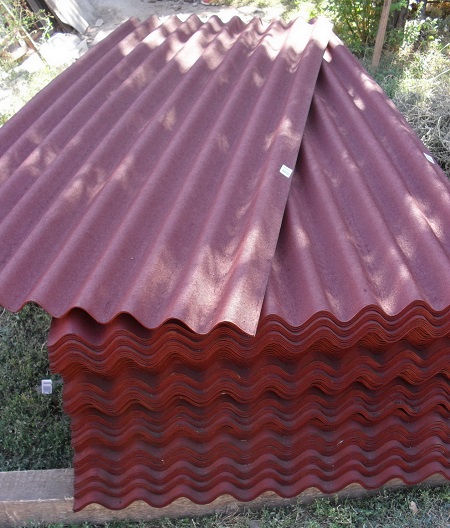
In the manufacture of this coating, mineral fiber and impregnation in the form of bitumen are used, after the application of which the technical properties of the roofing material are increased. This material is then stained with pigments. Often, this roofing material is used on roofs of a simple architectural form, but as practice has shown, it can be put on complex roofs. Compared to conventional slate, soft is made from products that are safe for humans, and it does not include asbestos.
The most common soft slate is Ondulin from a French company. Buyers are attracted by affordable prices, a wide selection of textures and colors. In the modern market of roofing materials, you can also find American soft slate, which is practically inferior in terms of its technical characteristics.
At the first stage of manufacturing soft slate, the mineral fiber, which is the main component, is impregnated with molten bitumen. In the next step, the material is impregnated with resins and various additives to acquire certain properties. After all the procedures, the material is heated and pressed.
Pros of Soft Slate
The popularity of this material is due to the advantage of such indicators:
- moisture resistance. Soft slate has a low water absorption value.
- environmental friendliness. It does not contain asbestos harmful to human health;
- durability. With proper installation, the service life is more than 50 years. The manufacturer gives a 15 year warranty on this roofing.
- biological resistance. Such a roof is resistant to the effects of fungi, bacteria and is not subject to decay.
- convenience of transportation. The low weight of the material makes it possible to store and transport it with ease.
- profitability. Ease and simplicity of laying is due to the low weight, and therefore the strengthening of the rafter structure is not required.
- It has good sound absorption characteristics.
Rubber slate: advantages and disadvantages
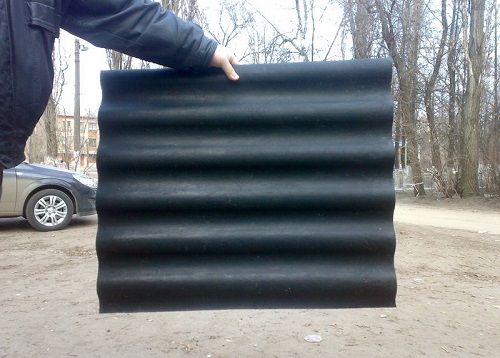
Such material has a lot of advantages. It should be noted that rubber slate is made from a special grade of rubber, to which fiberglass is added.
Main advantages:
- flexibility and resilience. Upon impact, the material does not crack or crumble.
- ease of installation. Rubber slate can be cut with an ordinary knife, it can be laid on any roof in shape and complexity.
- resistance to temperature extremes.
- it does not break with pressure, and therefore you can walk on the roof without fear of destruction.
- long service life.
- low weight. Strengthening of the roofing system will not be required, and for installation it is possible to do with small labor costs.
The main disadvantages of rubber slate are:
- instability to low temperature;
- unlike asbestos-cement slate, rubber slate is combustible.
Where is rubber slate used?
Often, rubber slate is used to cover low-rise buildings, as well as to cover various outbuildings. Due to its flexibility and elasticity, the material is ideal for roofing with complex geometry, it is also recommended for flat and sloping roofs.

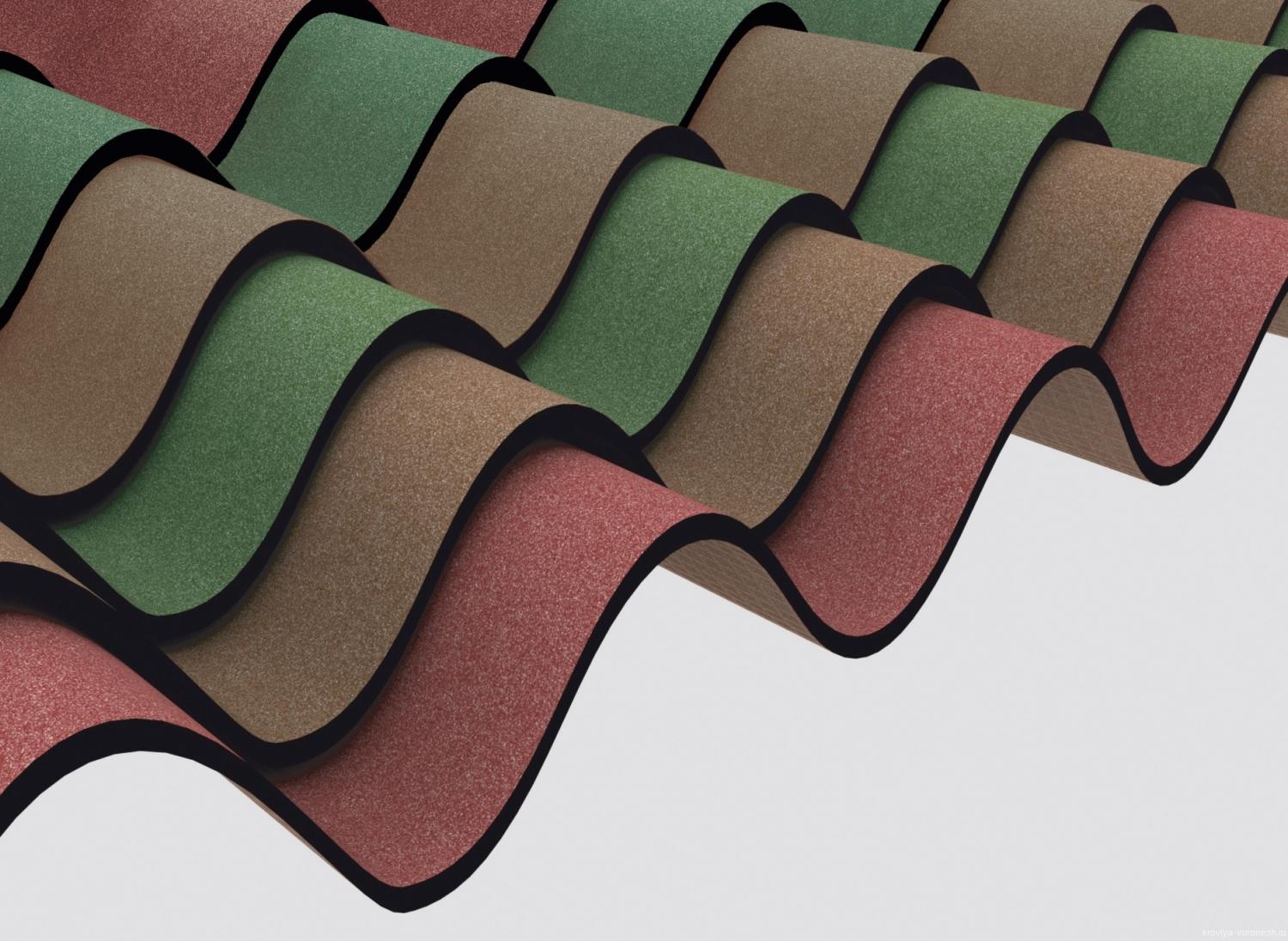



Alas, no comments yet. Be the first!